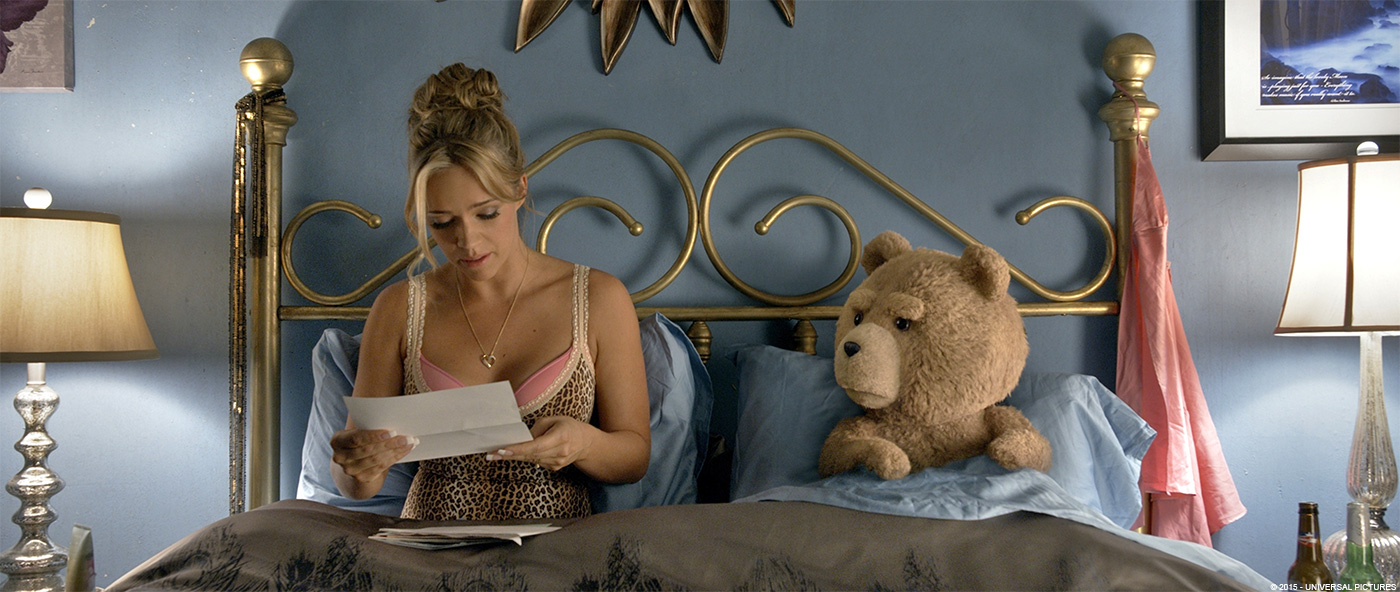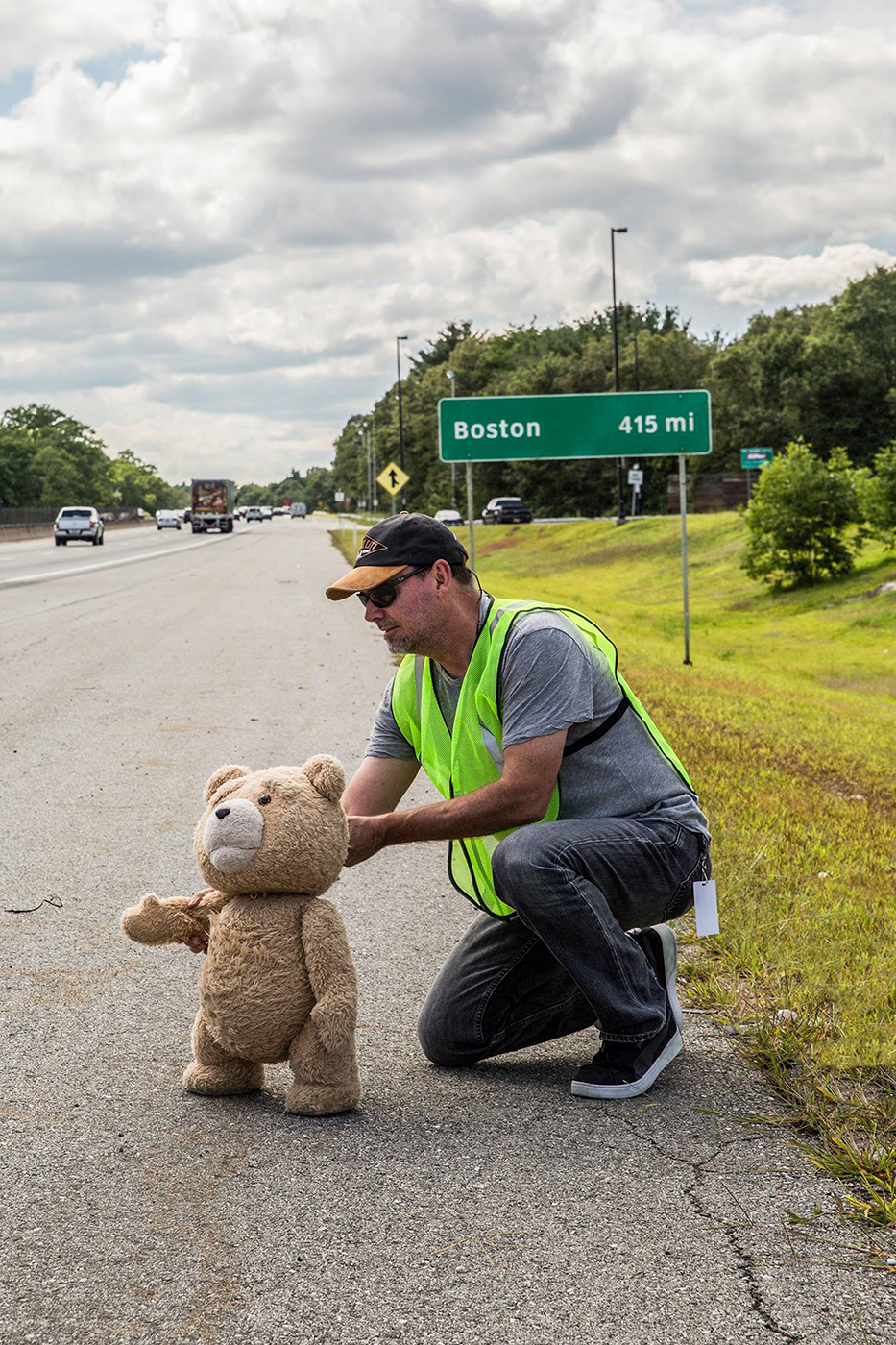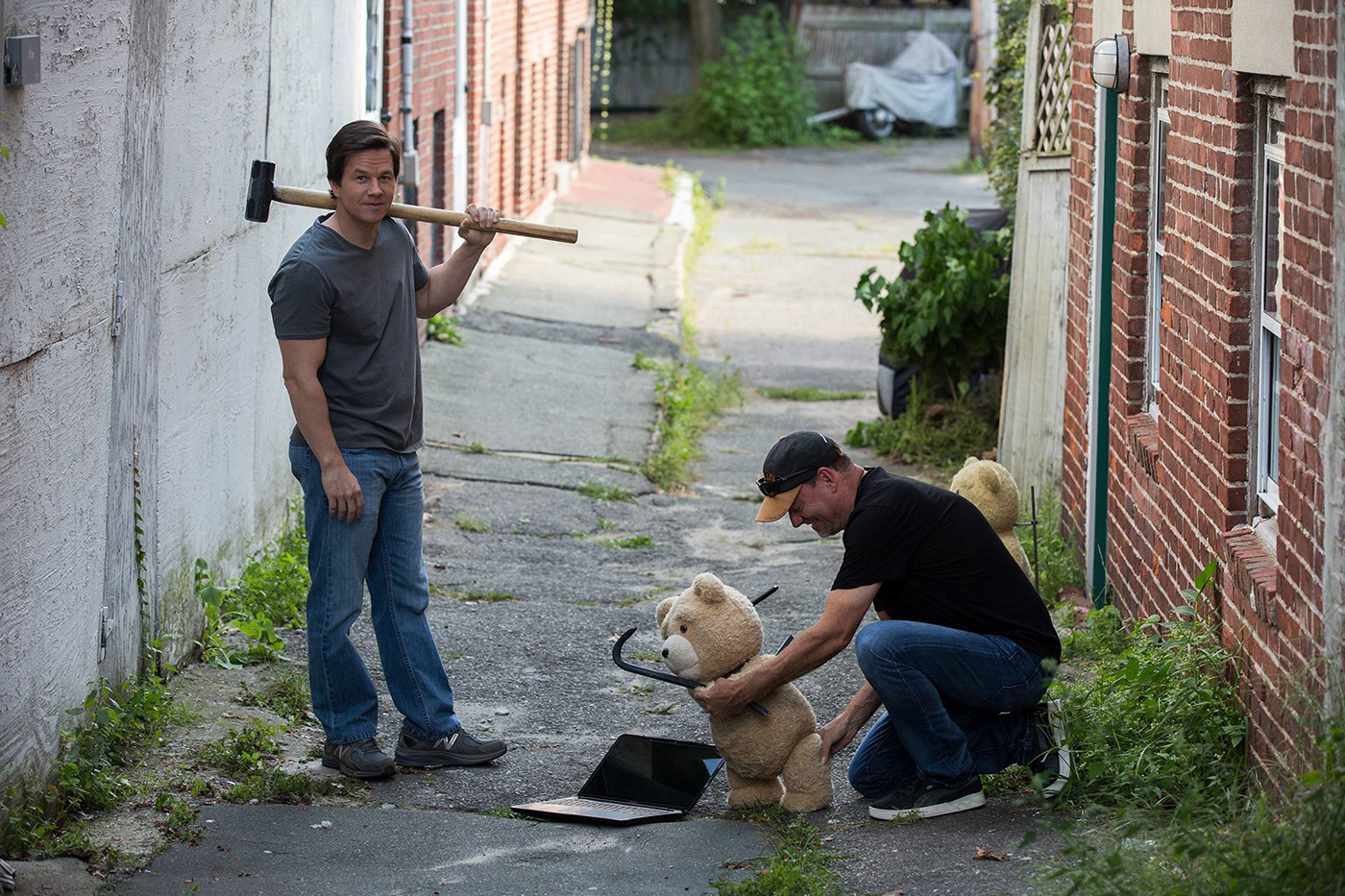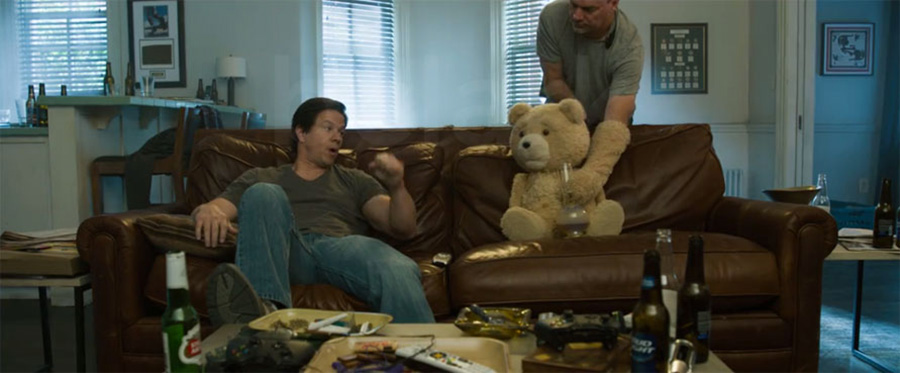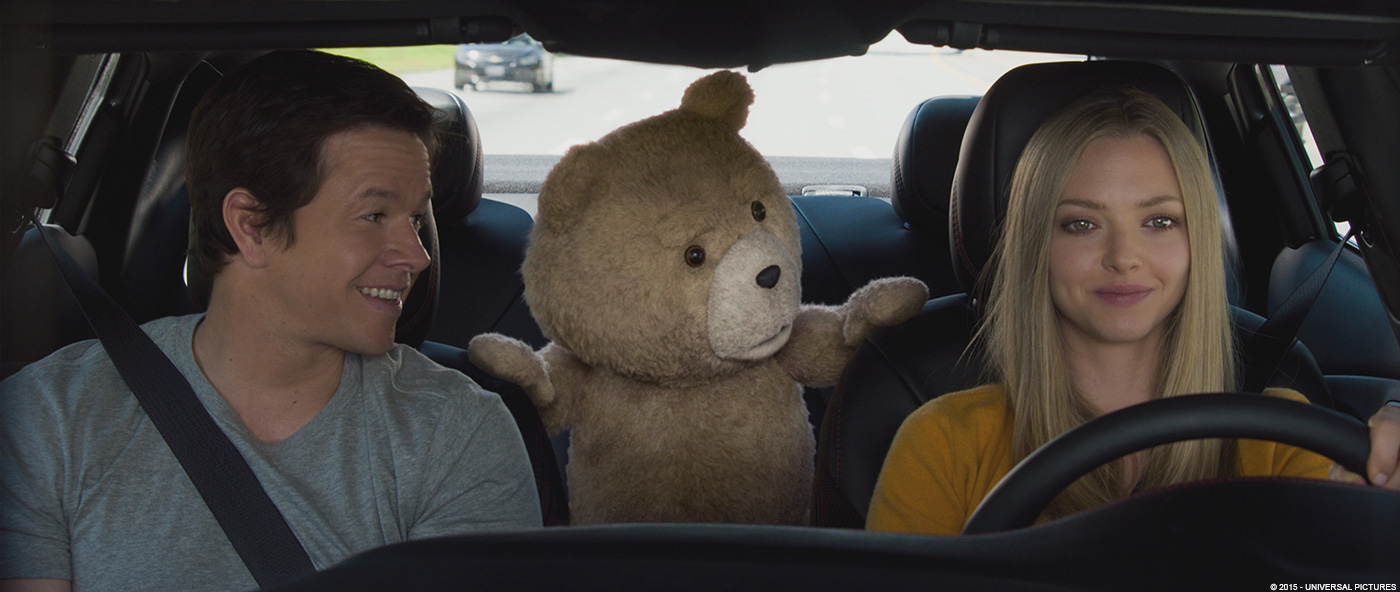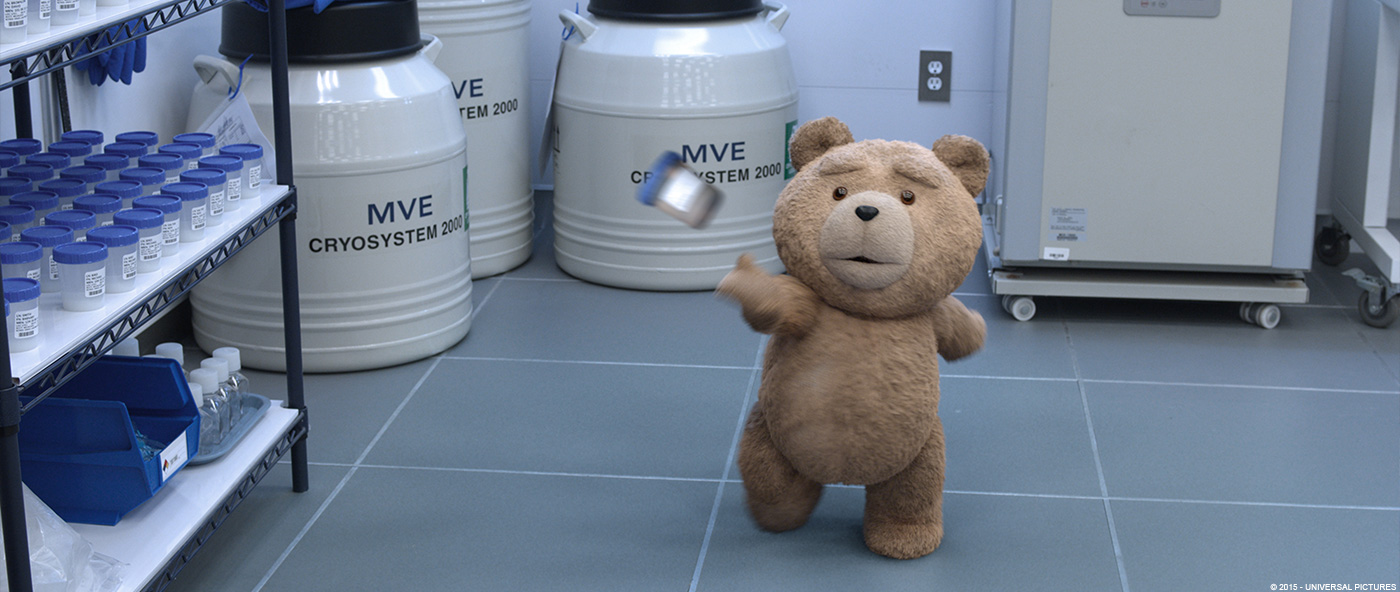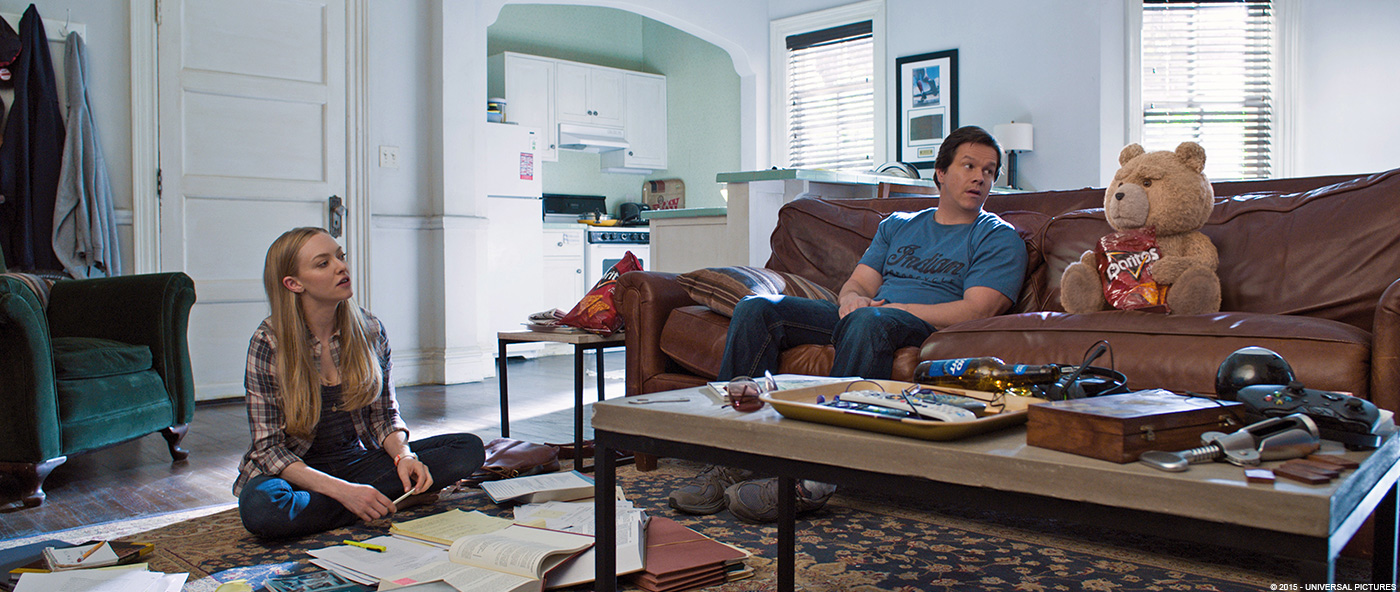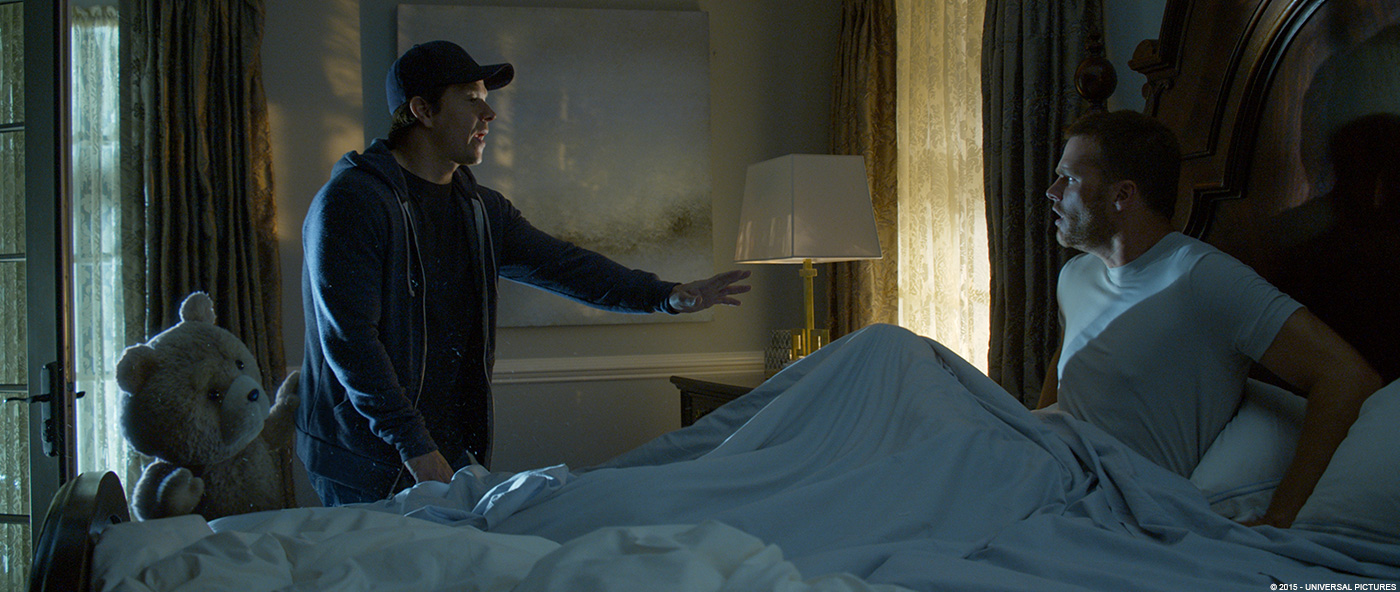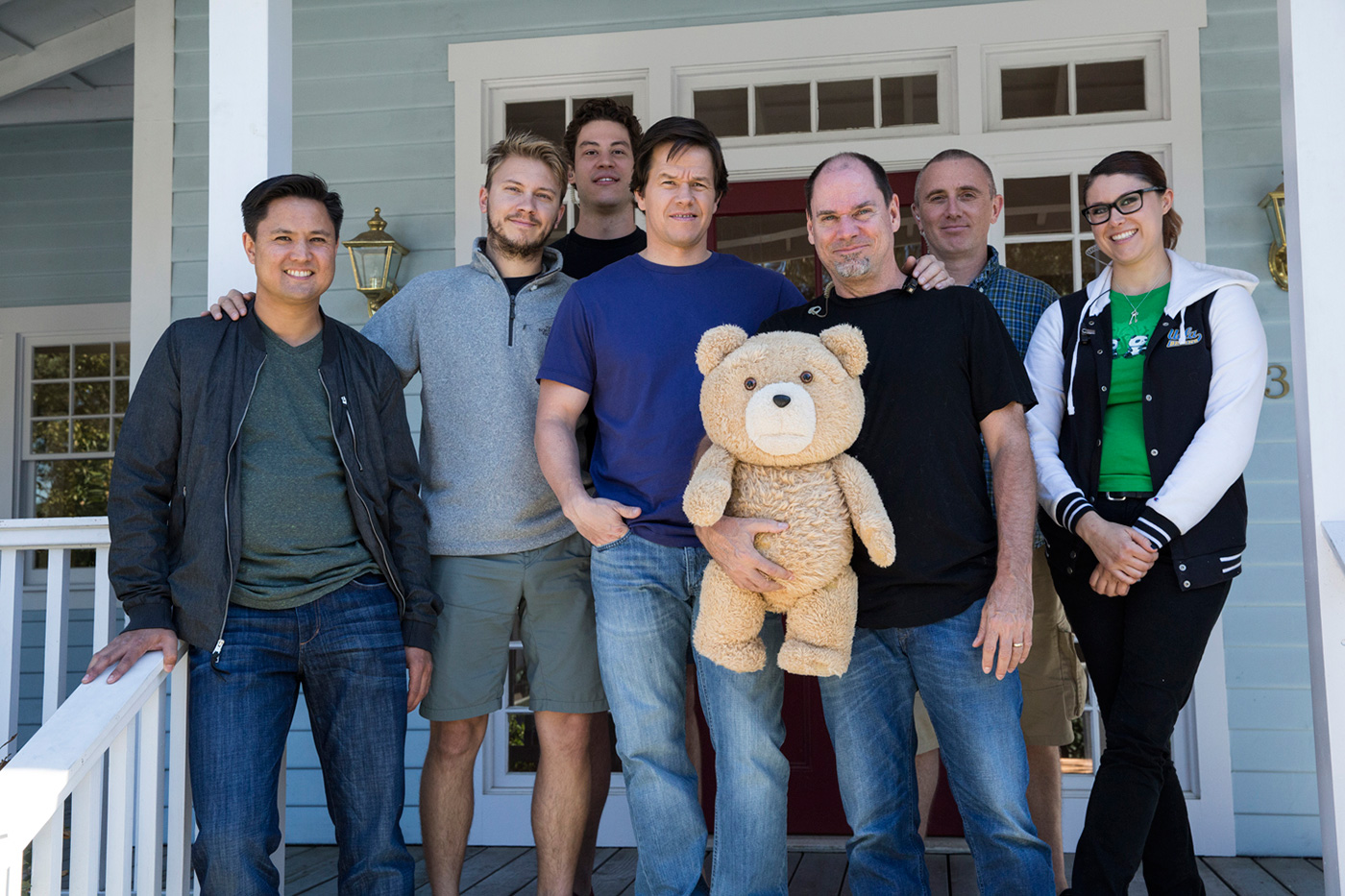In 2012, Blair Clark talked to us about his work on TED. Then he worked on AFTER EARTH and worked again with director Seth MacFarlane on his film A MILLION WAYS TO DIE IN THE WEST. He explains today his work on this new episode of TED.
How was this new collaboration with director Seth MacFarlane?
After TED, we worked on Ted’s appearances on the Jimmy Kimmel Show and the OSCARS, then on A MILLION WAYS TO DIE IN THE WEST which dovetailed right into working on TED 2, so it’s been one long enjoyable ‘continuation’ of working with Seth.
What was his approach about the visual effects?
After 3 shows together, there is a shorthand in communicating between Seth and I. I have a pretty good handle on what he’s looking for, what he will have issues with, and he had a great deal of confidence in the companies doing the work. He was always very clear about what he wanted to convey in the shot and would generally leave the details of the effects to us.
How did you approach this new episode?
One of the tricky things with TED 2 compared to the first one, was that Ted couldn’t look any different. That being said, both of our main VFX houses had new tools that would need to be fine tuned to produce something that looks exactly the same, but still benefits from the updated software. Also in addition to the veterans from the first show, each company had new artists who had to get up to speed with the tools and processes that kept Ted consistent between sequences and VFX companies.
Can you describe one of your typical day during pre-prod, shooting and post?
Pre-Production consisted of many meetings with other department heads, to plan a number of sequences that would require a high degree of cross-over and coordination between us. A few examples being, Ted driving the car, and ultimately crashing into the barn, as well as high speed car chase through the pot field (which didn’t make the final cut of the film, but will be on DVD Director’s cut).
Shooting was the normal routine of many films with effects, plan for what is coming up, have a plan B (because things will change, and sometimes things will go a bit wrong), etc. Our on set team was a fine tuned machine. Dione Wood and Natasha Francis were our VFX Producers, Alexa Hale was our VFX Production Manager, Eric Marko was our great Reference Supervisor, Wes Barker was our Data Wrangler, Webster Colcord and Sergio Villegas handled the motion capture and MVN equipment, and Dave Gariepy was our hard working VFX Assistant. We shot the majority of the film in Boston and surrounding areas, with smaller shoots in New York, and Los Angeles.
Post Production days were spent at the Editorial offices that were setup in Beverly Hills reviewing VFX shots from the vendors that had been delivered the night before, prepping them to show Seth (cutting them into the editorial cut). Reviewing shots and scenes with Seth, Recording the motion capture (MVN) for shots to be turned over to the VFX houses, Conference calls with Glenn and Eric and their teams, and the other things that always come up during post production (Additional Photography shoots, preparing for trailers, preview screenings, etc.)
How did you work with Eric Leven at Tippett Studio, and Glenn Melenhorst at Iloura?
I love working with Eric and Glenn! They are vary talented and bring quite a wealth of knowledge to the show. Both of them lead amazing teams of artists. Since my role was VFX Supervisor on the Production side, I didn’t get to see them in person as much as I would have liked. But we had cineSync and Skype calls with them 2 – 3 times a week for reviewing shots, and checking in. In addition, Avi Goodman (Iloura‘s CG Supervisor) was able to come to Boston for a few weeks and help with on-set supervision for the barn crash, pot field, and a huge car chase sequence through the pot field. Eric was able to come help with some on-set supervision for a week or so, during some of the ComicCon shots that were filmed on the FOX lot in Los Angeles.
Other lead member’s of the teams were:
Tippett Studio (Berkeley, California):
Eric Leven – VFX Supervisor
Fiona Chilton – VFX Producer
Brian Mendenhal – Animation Supervisor
David Schnee – Compositing Supervisor
Colin Epstein – Lead Compositor
Ross Nakamura – Lead Compositor
Iloura (Melbourne, Australia):
Glenn Melenhorst – VFX Supervisor
Ineke Majoor – VFX Producer
Avi Goodman – CG Supervisor
Nick Tripodi – Animation Supervisor
Matt Omond – Compositing Supervisor
Can you tell us more about the previs process?
We prevised sequences like “The Mess Around” when Ted is recklessly driving a car while Mark and Amanda sleep, and other similar sequences that would benefit from having a previs plan to get everyone on the same page before shooting the scene. We also had ‘postvis’ in which Webster Colcord, Michael Parks, Brad Alexander, and Jerry Zigounakis did some really great work using mocap data, and keyframe animation to quickly rough out sequences that had yet to be turned over to the VFX studios, for filling holes editorially or as needed for test screenings, etc.
What are the main differences since Ted 1?
The main difference was how much Ted was in the film. We had roughly double the shots to complete in half the time as the first film.
Ted is in various lighting conditions. How did you handle this aspect?
In addition to the standard HDRI, Gray Ball, Color Chart reference, Eric Marko shot thousands of stills that were then stitched together to use as very clear reference for the lighting of the sets, and placement and proximity of the lights, furnishings, props, etc.
Seth MacFarlane was wearing a motion-capture suit on-set. How does that help for the various interactions and animations?
Although he did wear the MVN suit on set a few times, the majority of motion capture was done in post production with Seth in the MVN suit pantomiming to the cut scene and pre-recorded audio that was played back as he performed. This allowed Seth to cut the scenes, get them just right, and perform only what was necessary.
During principal photography, Seth would still stand just out of frame on set and record dialog during the take, so there could be a realistic interaction with Ted and the actors, and acoustically it was in the same space.
Usually, we would mocap scenes in which Seth wanted Ted to be very specific, conveying a particular emotion, or delivery of a line, or gesture. But their were many instances where Seth would just tell me, “You guys can just do that” and leave it to the animator’s to embellish as needed. Almost all of the action shots (running, fighting, etc) were also left to the animators to key frame animate.
As much as animators love to create a performance from the ground up, the MVN data gave a basic ‘starting point’ for the performance and was very important especially with such a tight schedule, to get the blocking and early stages of animation an almost 100% success rate in director’s reviews, allowing more room to concentrate on things that were not captured with the motion capture suit (hands gestures and details, and all facial expressions, and mouth and lip animation).
How did you handle the various interactions of Ted with the actors and the environments?
Much as we did in the first show, if there was to be a ‘hand off’ of a prop between Ted and another actor, I would usually be hiding behind a piece of furniture until the moment the action was to happen and then reach over (trying to move the prop as if it were coming from Ted’s location) and hand the prop to the actor (or take the prop from them) and go back into my hiding spot. Later, I would have to be painted out, and the hand off would be the practical prop on the actor side transitioning to a CG prop on Ted’s side.
For other interactions, like Mark getting punched, I’d go in and jab him with poles capped with fuzzy ends to wrinkle Mark’s shirt, give impact depressions, and also allow Mark to react accurately for each of Ted’s punches. All of the actors got pretty good at selling Ted being in the scene with them, but Mark was the master when it came to a convincing dialog with nothing but a pair of plastic eyeballs on a stick or a piece of tape indicating where Ted would eventually be.
How did you split the work amongst the VFX vendors?
We tried to keep it split according to who did what on the first film, for example, Iloura had Ted wearing a tuxedo at the end of the first film, so it made sense to give them shots that Ted would be dressed similarly (Ted and Tami-Lynn’s wedding, reception, and the main titles dance number). For shots with new costumes, it came down to assigning according to other requirements of the shots and schedules.
Was there a shot or a sequence that prevented you from sleep?
There were a few shots and sequences (like the Goose shot in the park) that were pushing right to the very end of the delivery day of the film (not just the VFX delivery!) That was very stressful.
What did you keep from this experience?
The skill, artistry, and professionalism we had from the VFX companies and our Production Team this show was THE reason we were able to finish on time, and with such a high level of quality.
The character we created, easily holds his own with the other actors in scene after scene for the whole film. The artists at these companies made him so believable and easy to visually digest, that I’m afraid many will mistake it for being EASY. It was not easy, not by a long shot. The audience was treated to a character that didn’t challenge them to accept it as real or not, but allowed them to watch as they watched the other actors of this film, and never question it.
That’s not easy, that’s skill, artistry, and professionalism at it’s best.
How long have you worked on this show?
One Year.
How many shots have you done?
We completed just over 1500 shots not including shots with minor paint fixes.
What was the size of your team?
In addition to those mentioned earlier, our Post Production team was:
Jenny Fulle – VFX Producer
Dione Wood – VFX Producer
Alexa Hale – VFX Production Manager
Kevin Jolly – VFX Editor
Andrew Turner, and Nick Bernardi – VFX Coordinators
Webster Colcord, Michael Parks, Brad Alexander, Jerry Zigounakis – MVN/ Mocap/ Pre & Post Vis team
VFX Studios: Iloura, Tippett Studio, Incessant Rain, Weta, Locktix.
A big thanks for your time.
// WANT TO KNOW MORE?
– Tippett Studio: Official website of Tippett Studio.
© Vincent Frei – The Art of VFX – 2015


